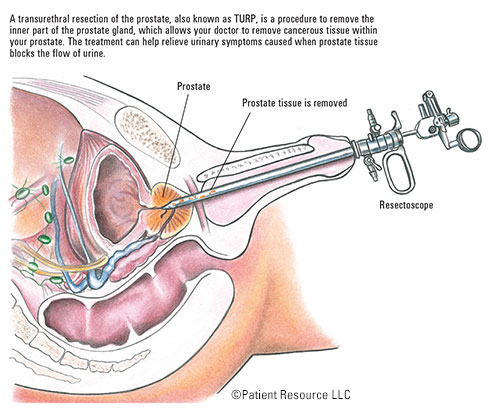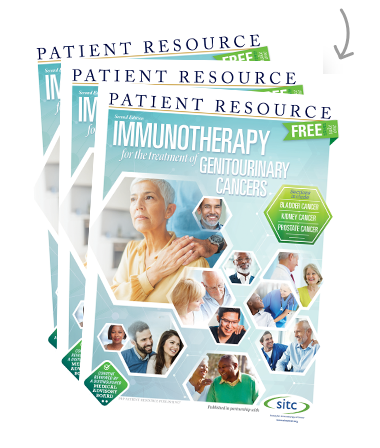Advanced Prostate Cancer
Surgery
Five different surgical procedures can be used to treat patients with prostate cancer, but most are appropriate only for Stage I or II cancer. However, two procedures may be used for advanced prostate cancer:
- A radical prostatectomy is the surgical removal of the prostate. This may be an option for some men with locally advanced disease (Stage III).
- Transurethral resection of the prostate (TURP) is a surgical procedure that can help relieve symptoms caused when prostate tissue blocks the flow of urine (Figure 1). However, TURP is not performed with the intent of removing all of the cancer or curing the disease.
Figure 1

To perform the procedure, the surgeon will insert a long, thin scope through the end of the penis into the urethra (the tube that carries urine out from the bladder). With the scope in place, the surgeon moves a wire heated by electricity through the prostate tissue to cut and remove it. TURP may be done with the use of spinal anesthesia, which numbs the lower half of your body, or general anesthesia, which puts you to sleep. The operation usually takes about an hour. After surgery and while you heal, a urinary catheter will be in place to help drain urine. The catheter is inserted through the penis into the bladder and remains in place from a few days to a few weeks. You can usually leave the hospital after two or three days. You will likely have some blood in your urine after surgery and may experience some urinary leaking, but most men regain some bladder control after a few weeks. TURP is a safe procedure with few serious side effects, but possible complications may include problems getting an erection, painful urination, blood in your urine, semen entering your bladder and urine, recurring urinary tract infections, narrowing of the bladder neck, or an inability to control urination (incontinence).
Monitoring response
When TURP is done to relieve urinary blockage due to prostate cancer, relief usually follows quickly. A regular DRE, routine blood tests and a PSA test are recommended after a TURP. Your doctor will want to know about any symptoms or pain.Questions about surgery you may want to ask your doctor
- Is surgery an appropiate treatment for me?
- What are the risks of the procedure? What are the benefits?
- What kind of anesthesia will I have?
- What are my options if I don’t have surgery?
- What is the recovery process?
- Will I need pain medication after surgery?
- Will my sexual well-being and fertility be affected?
- How often should I have checkups?
- What is the cost of surgery and will insurance cover it?
- Is there a clinical trial that I may be eligible for?



